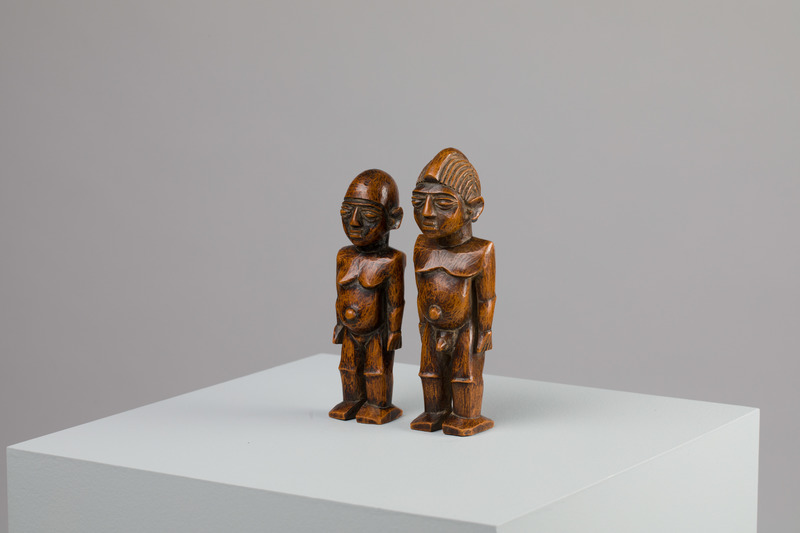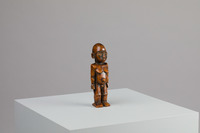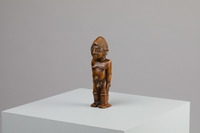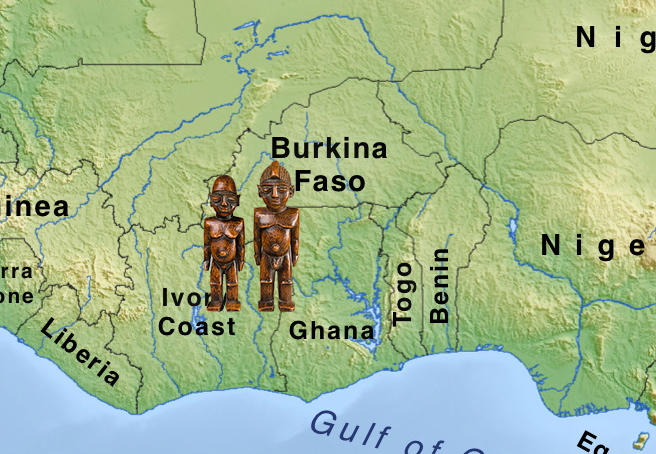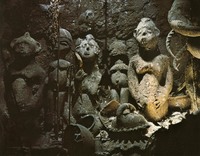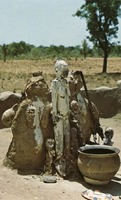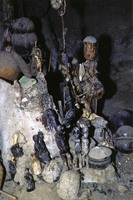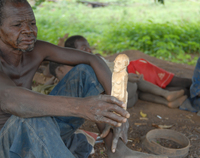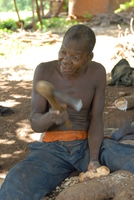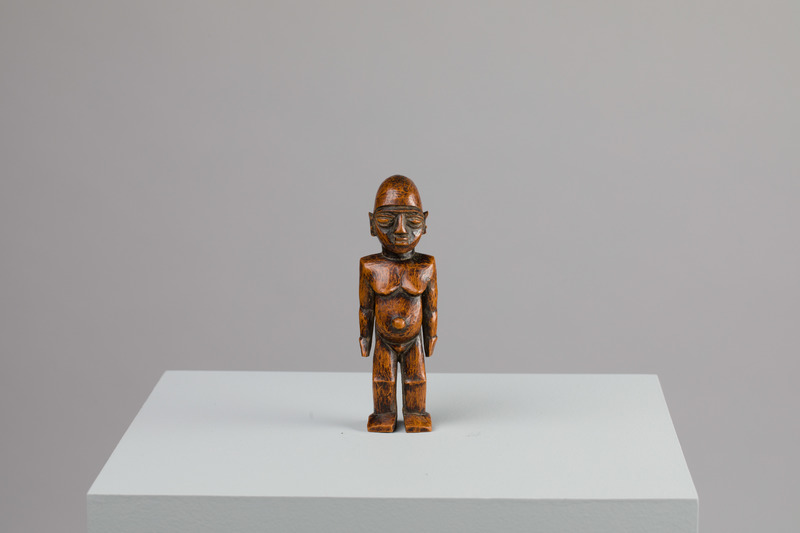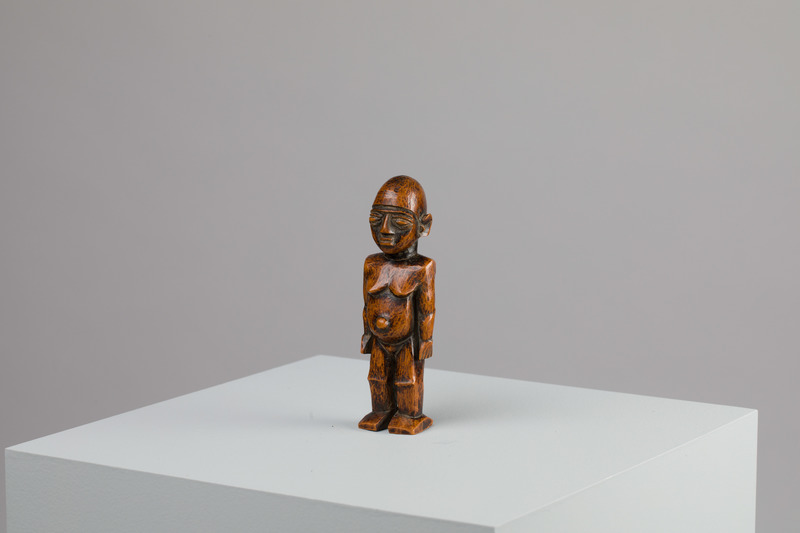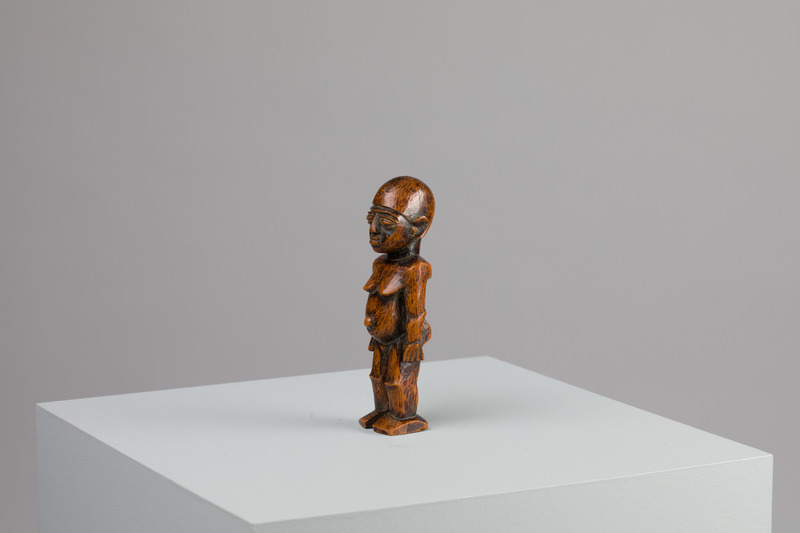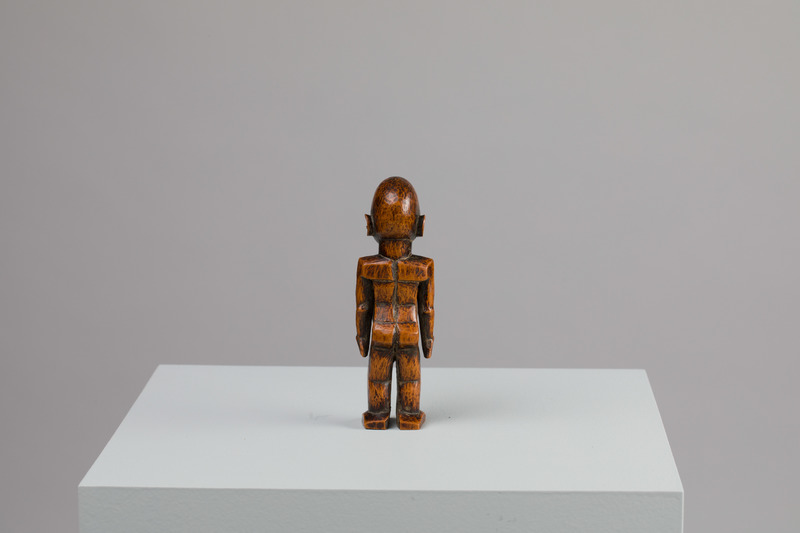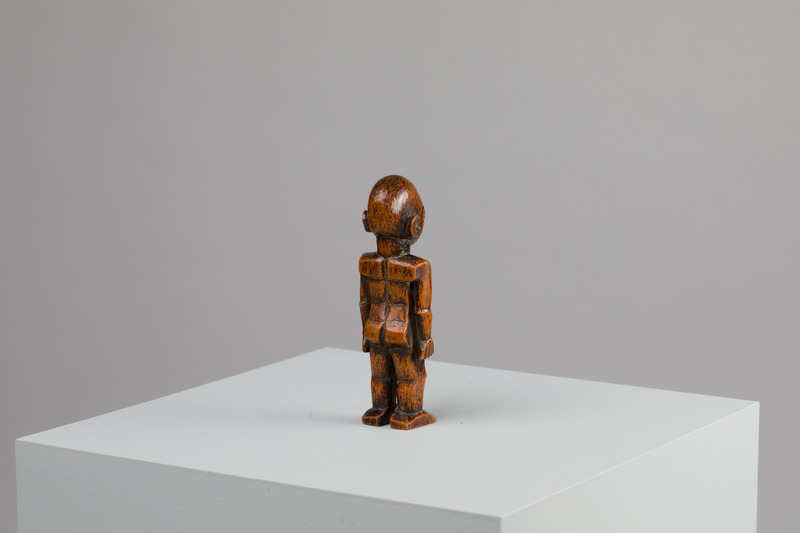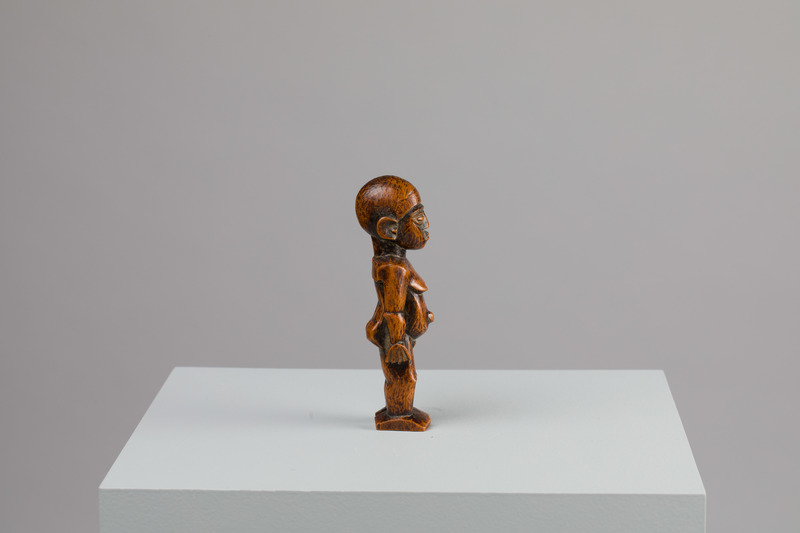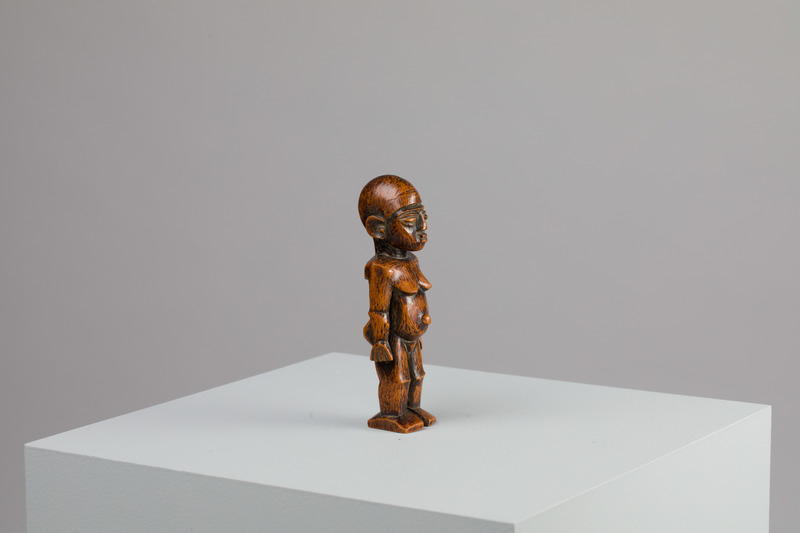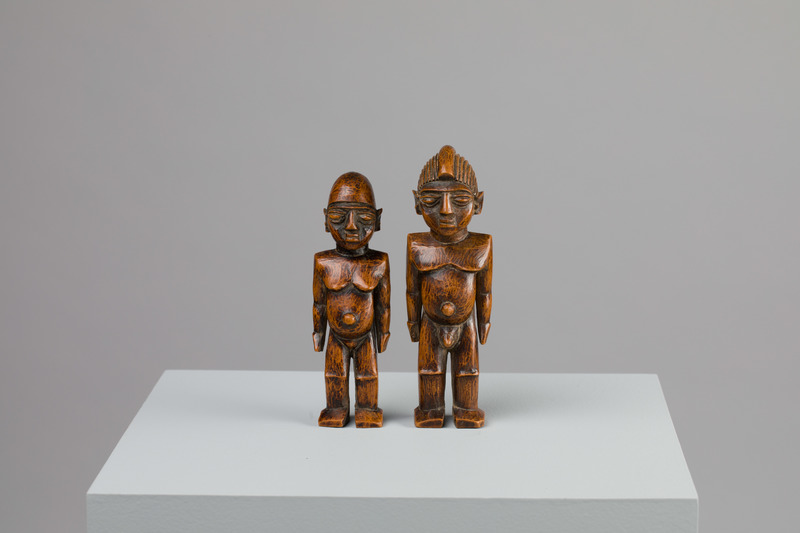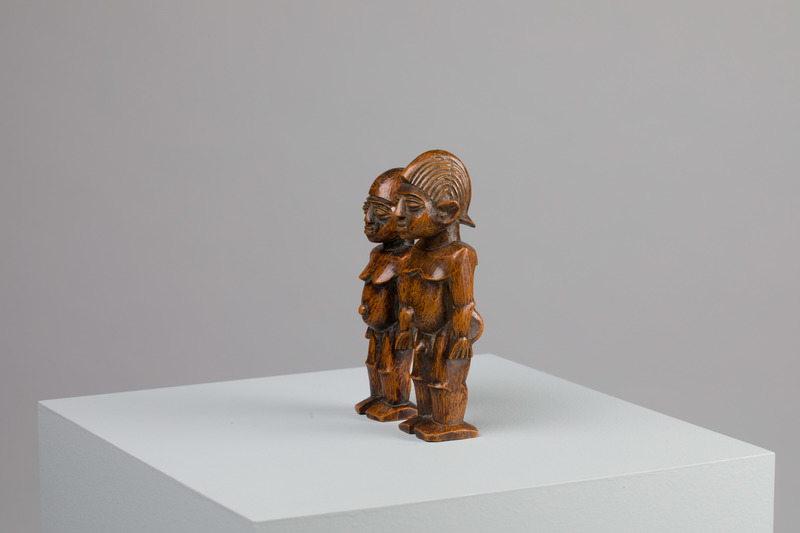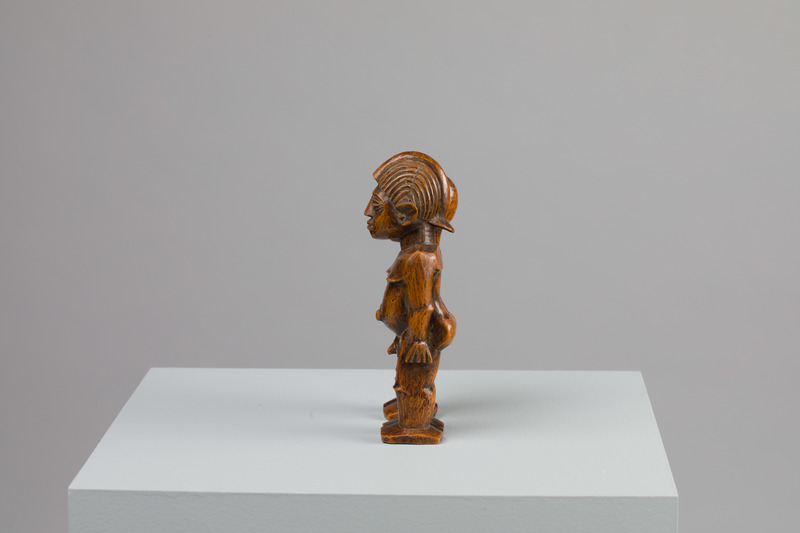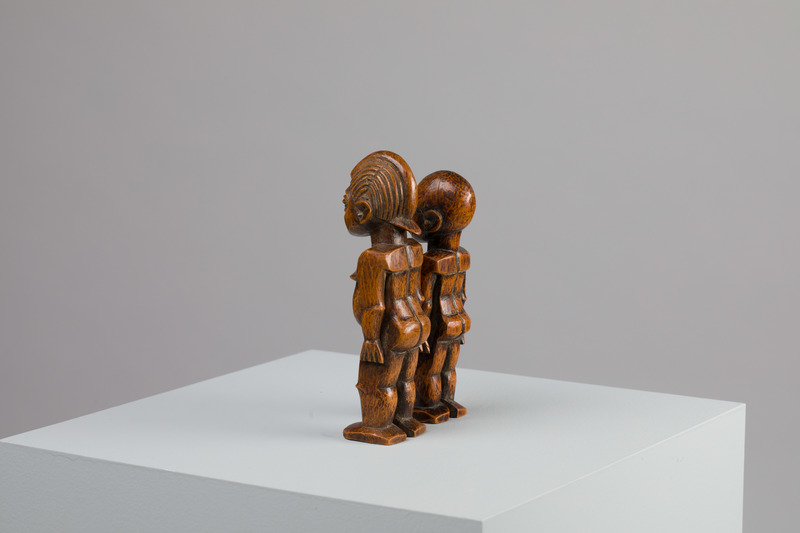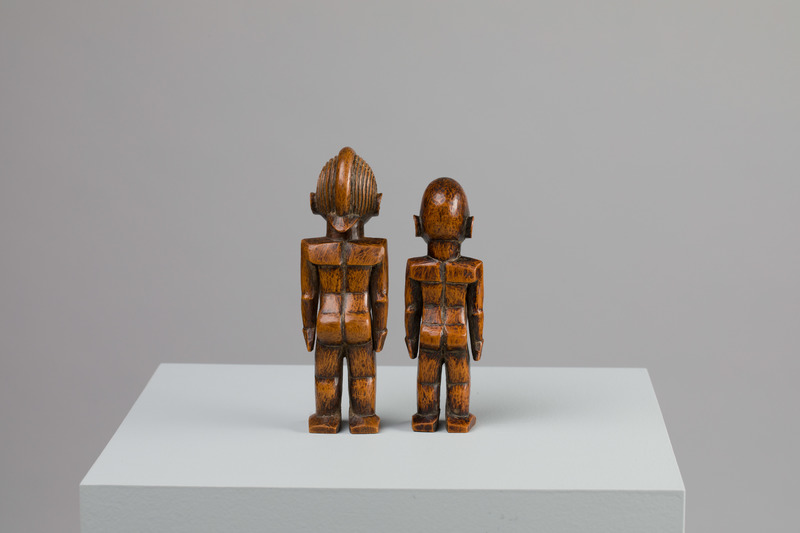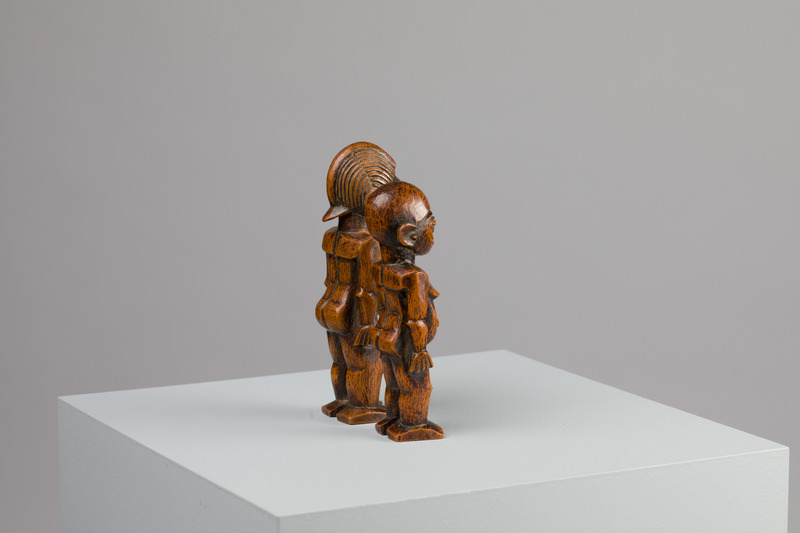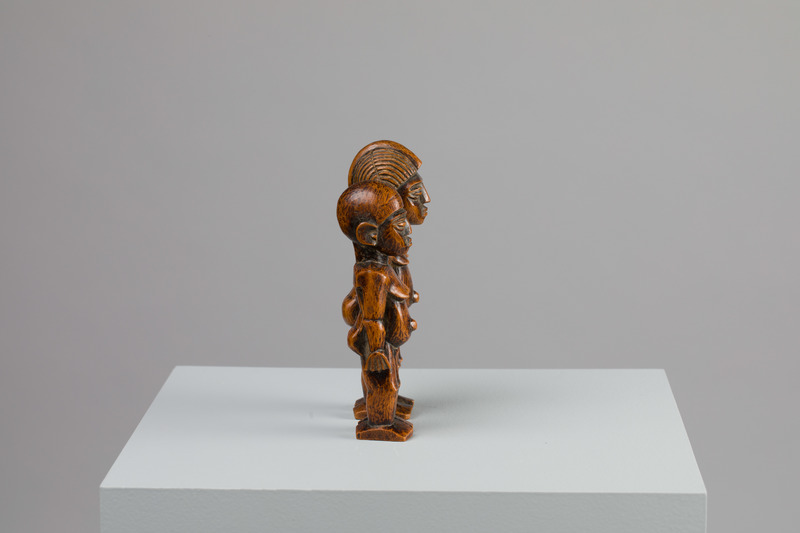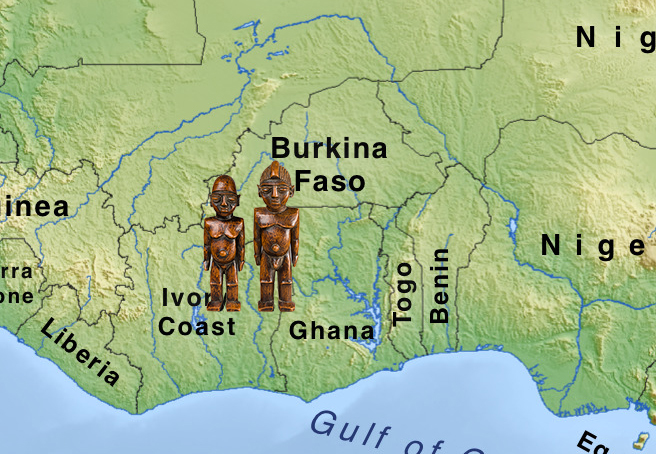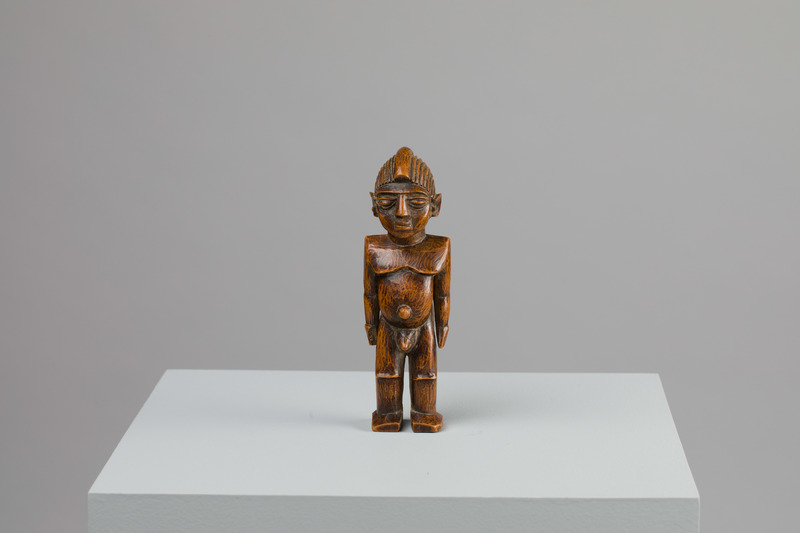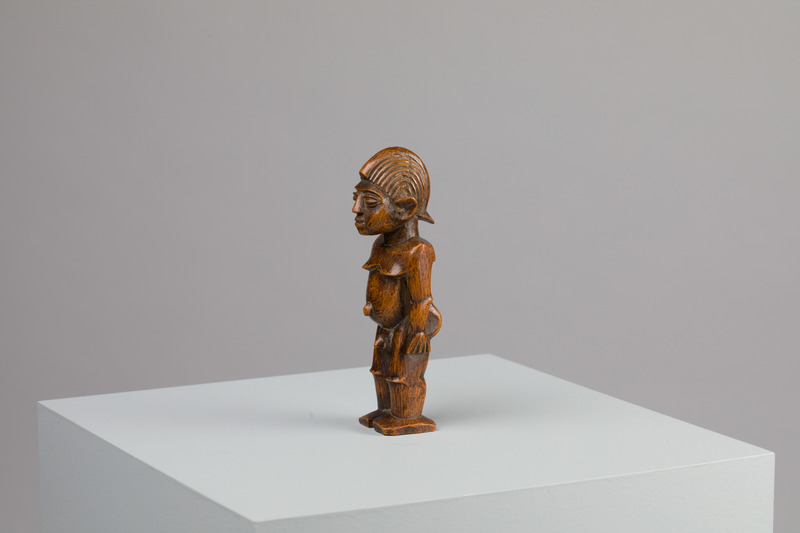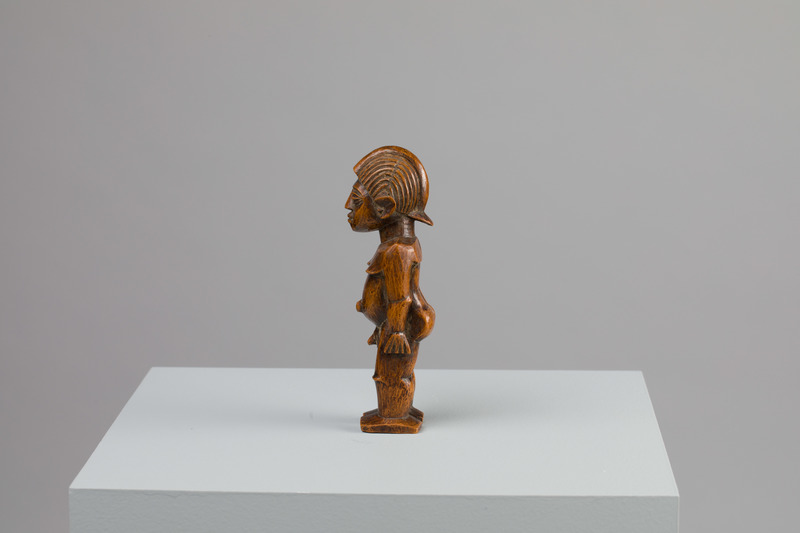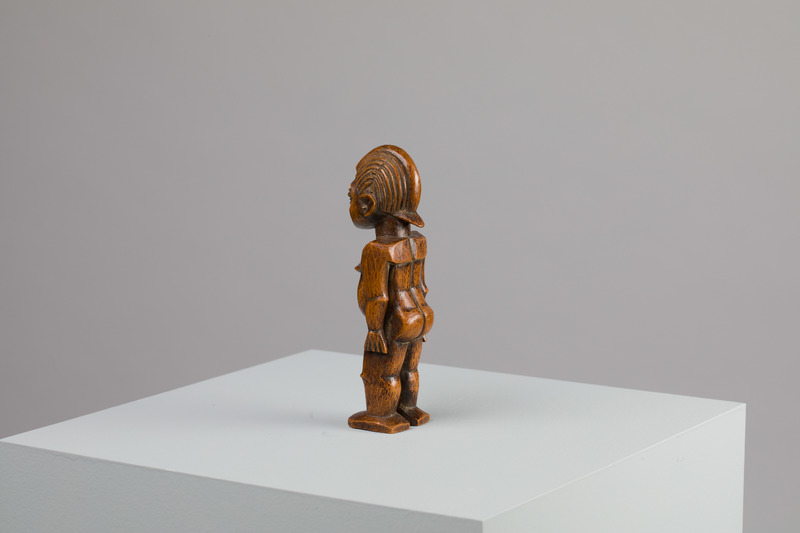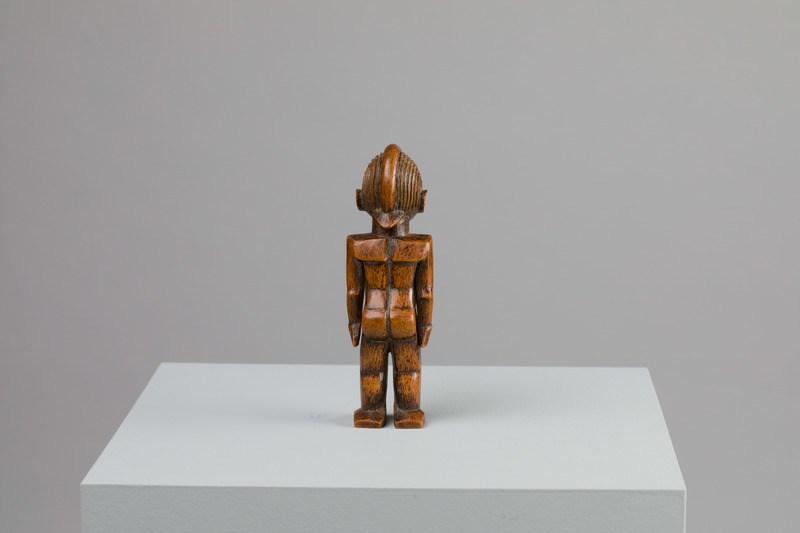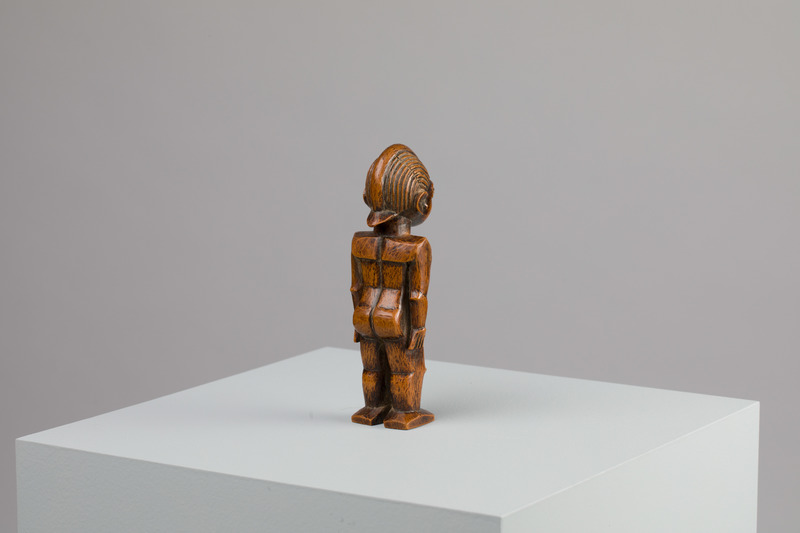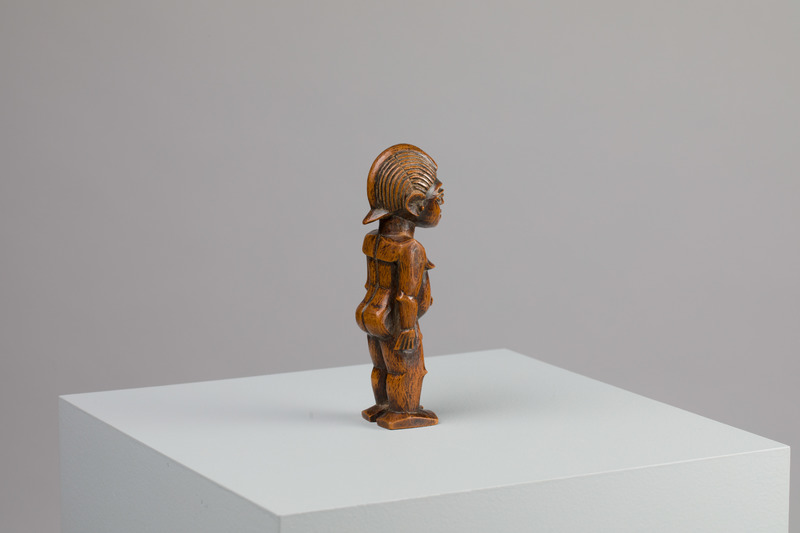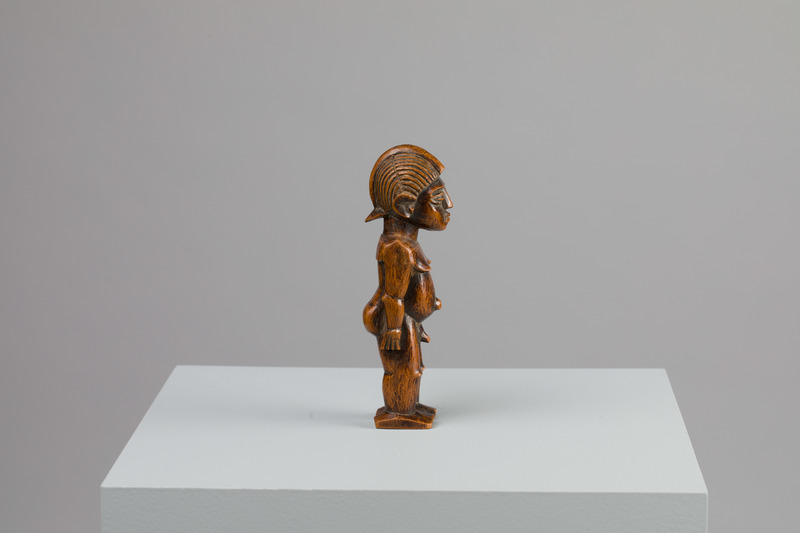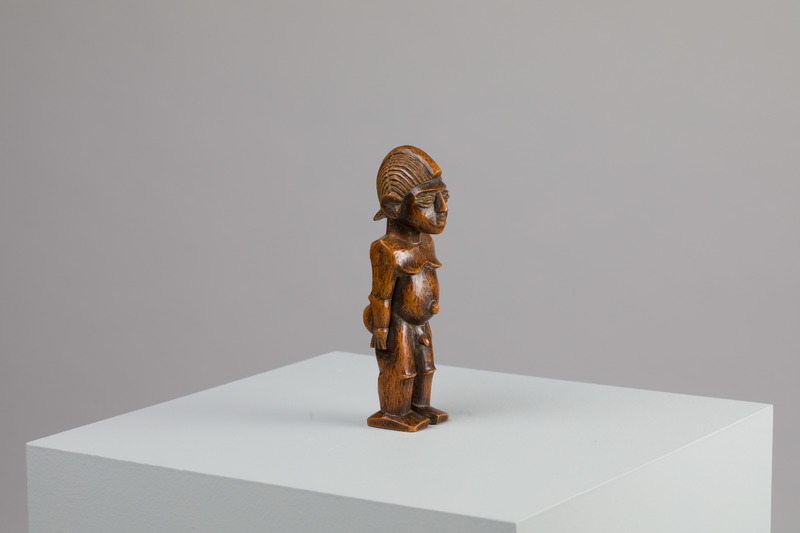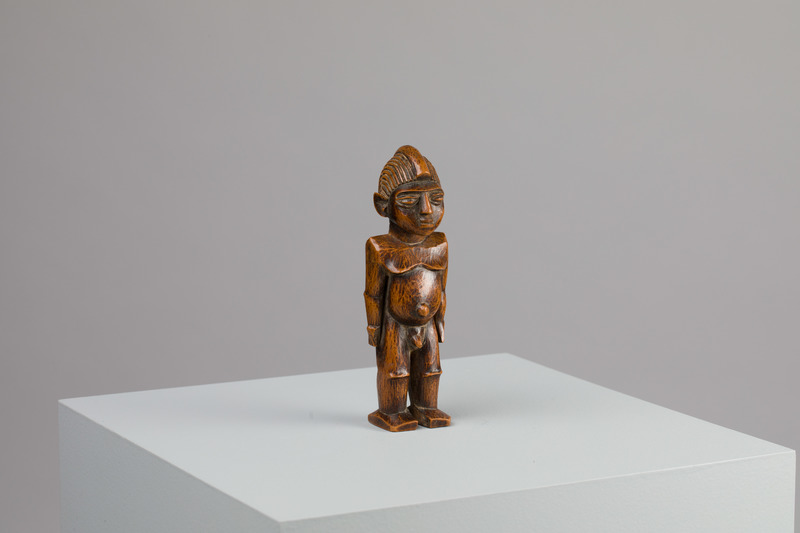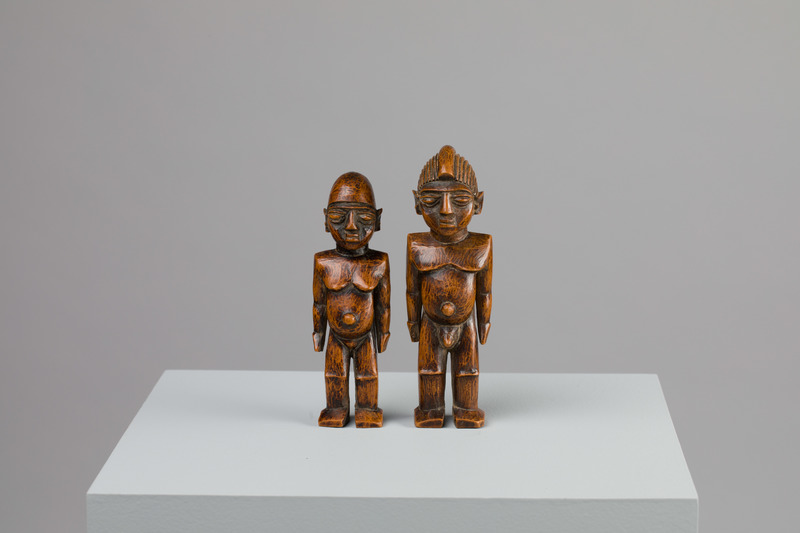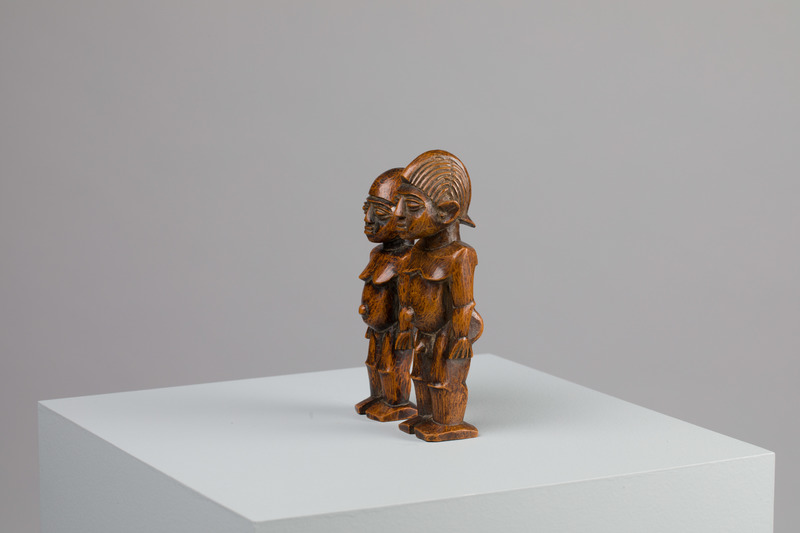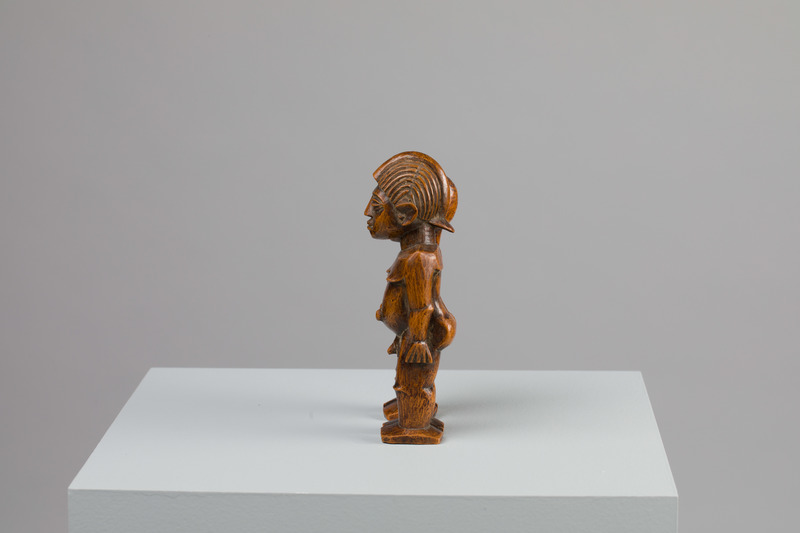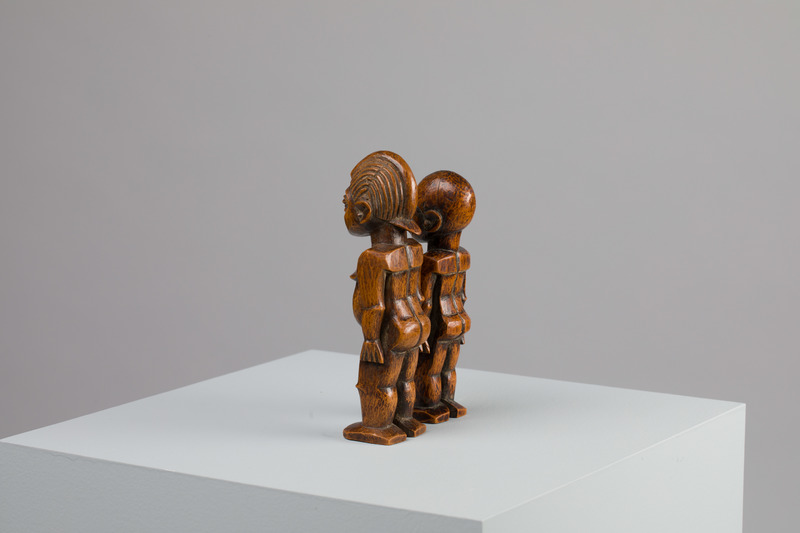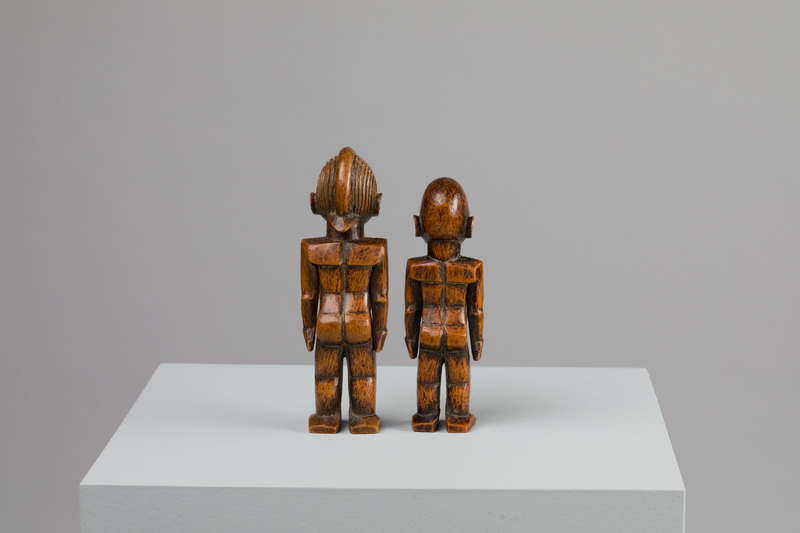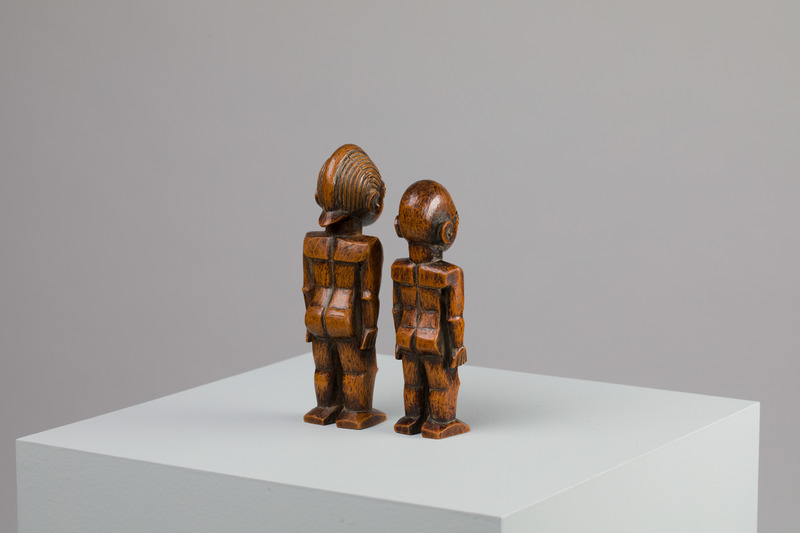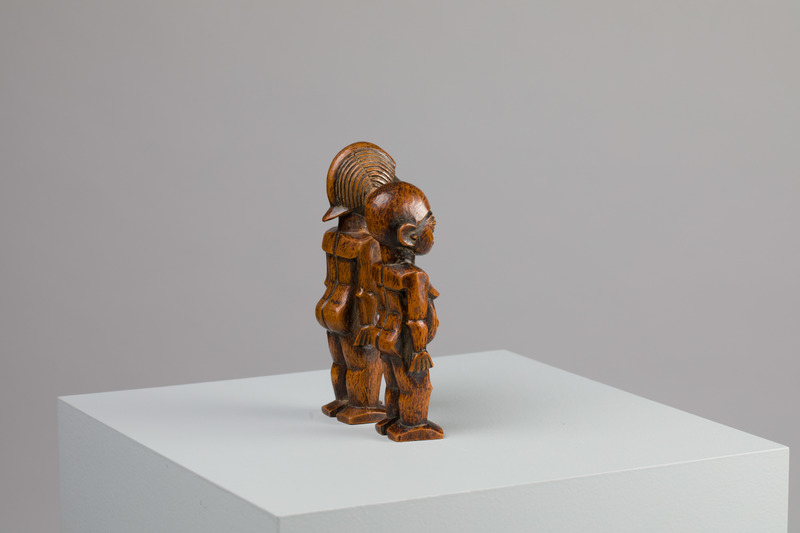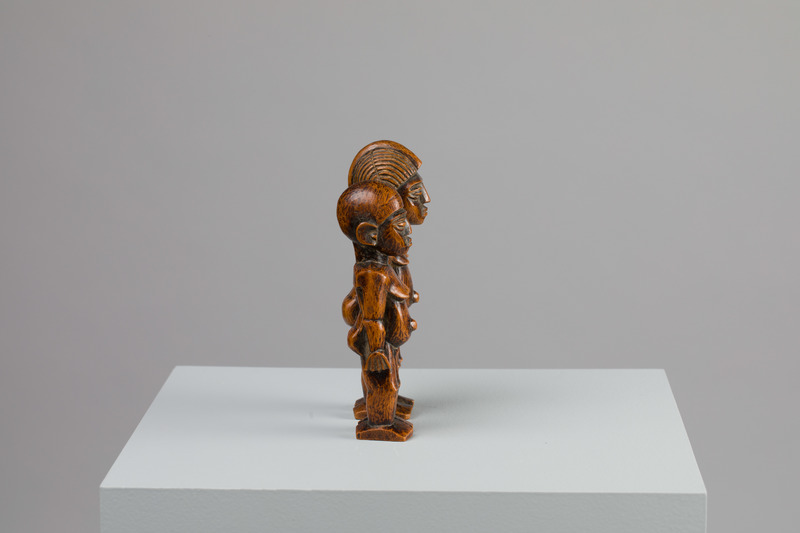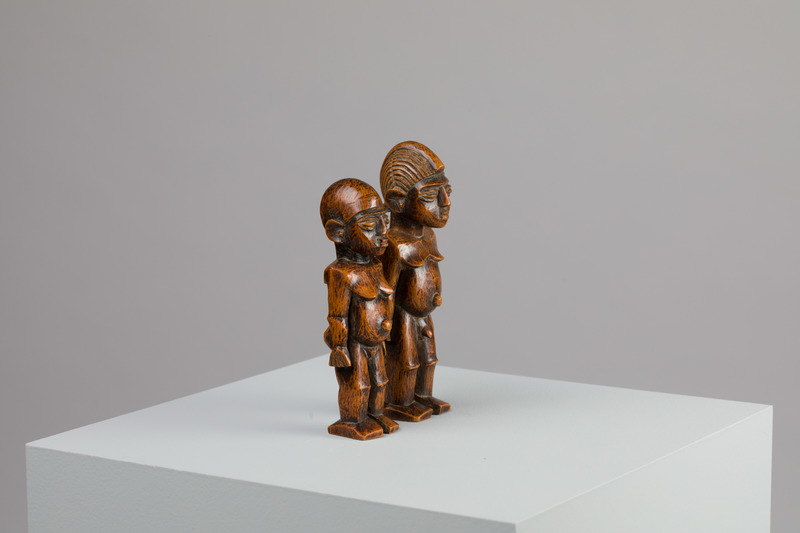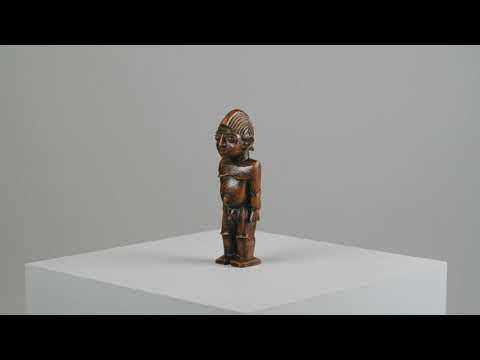Catalogue 14
Female Figure, bateba
Sib Poulfouté (Lobi artist), Latara, Burkina Faso
20th century
Wood, 4 5/8 x 1 1/2 x 1 3/8 inches (11.7 x 3.8 x 3.5 cm)
Palmer Museum of Art
Purchased from Allen and Barbara Davis
2016.91
Male Figure, bateba
Sib Poulfouté (Lobi artist), Latara, Burkina Faso
20th century
Wood, 5 1/4 x 1 5/8 x 1 5/8 inches (13.3 x 4.1 x 4.1 cm)
Palmer Museum of Art
Purchased from Allen and Barbara Davis
2016.90
The Lobi peoples have figures made to be placed into their personal or family shrine. They are not meant to represent ancestors, as was previously thought, but are living guardian spirits (bateba) who help do the required work (alleviating problems, protection from illness, etc.) of a shrine overseen by a spirit (thil). The figures are carved to emulate their owners, with the same hairdos, distinguishing characteristics, and so on (Meyer 1981a).
As in the past, spirits give very specific orders (bonoo) through the medium of diviners (bour). These orders must be strictly fulfilled. Otherwise, the misfortunes the spirits inflicted on the owners—which motivated them to seek out a diviner in the first place—would not be alleviated. Spirits can demand, in a very detailed way, for example, the erection of a new shrine with wooden or clay figures, decorated pottery objects of iron, brass, or other materials; and sacrifices or ritual feasts. . . . In the case of the two figures here [a male female pair in a very similar pose] the order was for “plain statues” (bateba phue kotena)—“plain” because, unlike other figures, they make no gestures. (Meyer 1981b, 32)
Ones with arms out, for example, are to stop and prevent the entrance of evil into a household (see, for example, the many gestures of figures in Meyer 1981a and Bognolo 2007). The pair of figures share many of the stylistic features seen in other Lobi figures such as the squared off shoulders, W-shaped breasts, and pectoral muscles and the protruding belly buttons (umbilical hernias), considered signs of beauty (Siegmann 2009, 58). While we do not know the identity of most artists of “traditional” African art forms, we are fortunate that Cory Gundlach, Curator of Arts of Africa, Oceania, and the Americas of the University of Iowa Stanley Museum of Art, has been able to identify the artist of these two figures as Sib Poulfouté of Latara, Burkina Faso. In 2011, as part of his dissertation research, Gundlach interviewed Poulfouté, whose carving is identical to the manner in which the two figures here were created.
WJD
References
Bognolo, Daniela. 2007. Lobi. Milan: 5 Continents Editions.
Meyer, Piet. 1981a. Kunst und Religion der Lobi. Zurich: Museum Rietburg.
———. 1981b. “Pair of Figures.” In For Spirits and Kings: African Art from the Paul and Ruth Tishman Collection, edited by Susan Vogel, 30–32. New York: The Metropolitan Museum of Art.
Siegmann, William. 2009. African Art: A Century At the Brooklyn Museum. New York: Brooklyn Museum.

